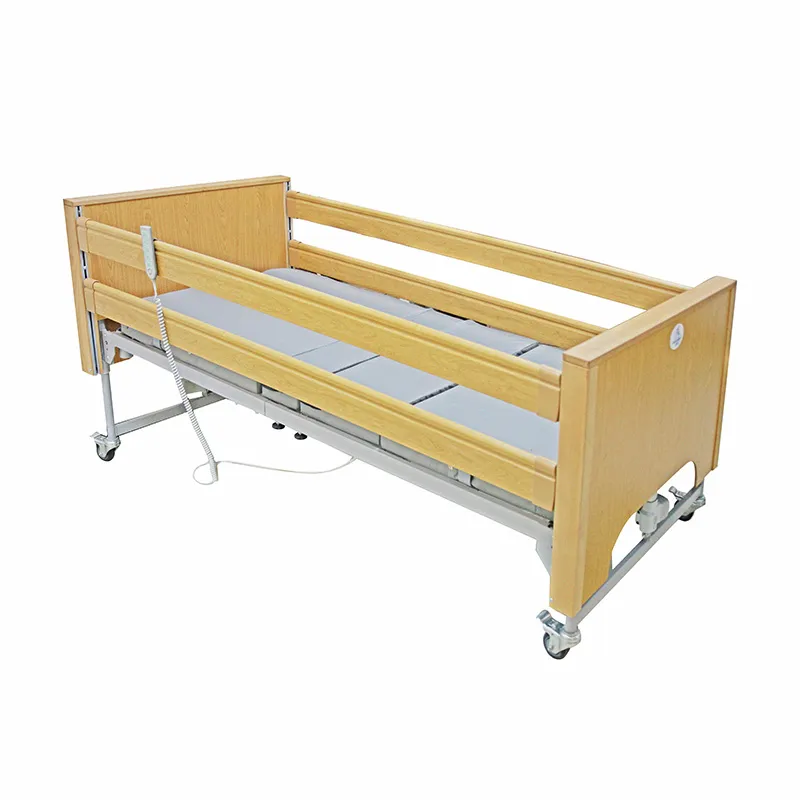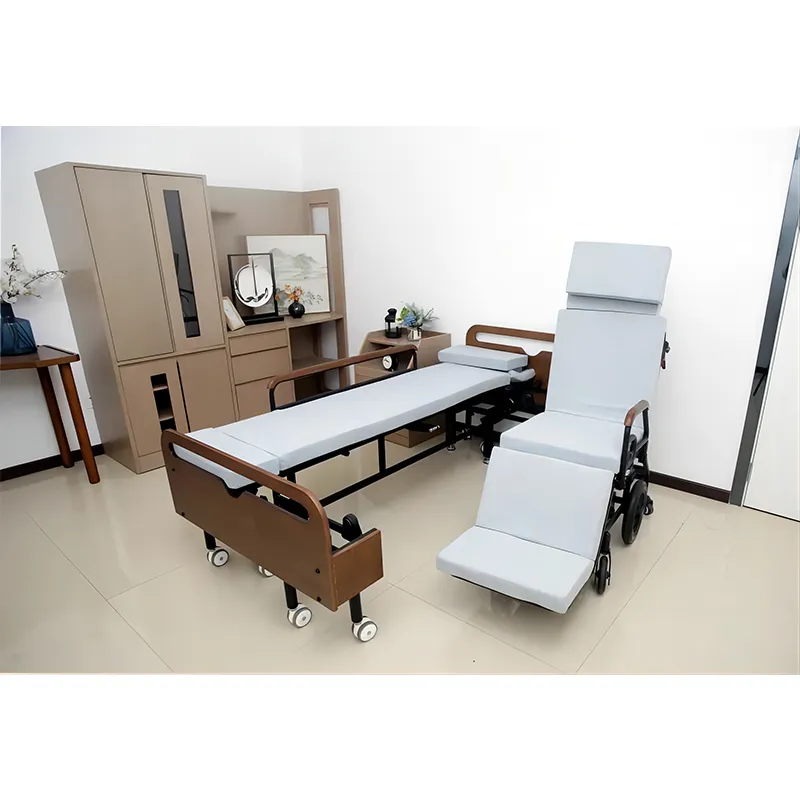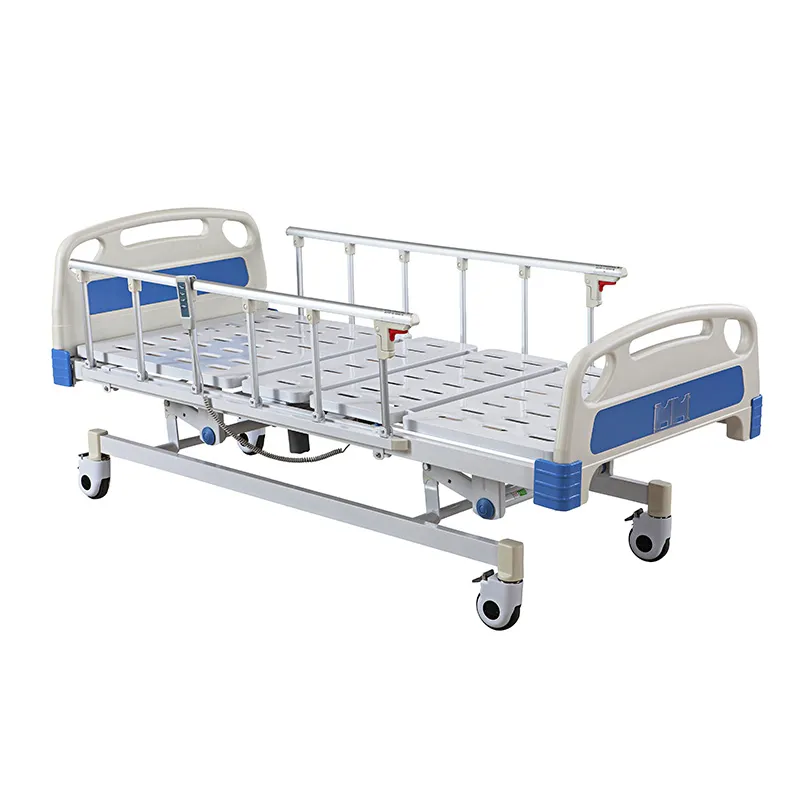
What is a medical bed? What are its special functions?
2024-11-01 15:30
Medical beds are essential equipment in hospitals, rehabilitation centers and home care. They are not only a place for patients to rest, but also an important auxiliary tool in the medical care process. The design and function of medical beds directly affect the patient's comfort, care quality and rehabilitation effect.
This article will discuss in detail the definition, structural characteristics, special functions, classification and selection methods of medical beds to help readers fully understand this key medical equipment.

What is a medical bed?
A medical bed refers to a bed designed specifically for patients, usually equipped with various medical functions and accessories to meet the needs of different treatments and care. Unlike ordinary beds, medical beds have adjustable bed boards, headboards, footboards and heights, which can provide patients with better comfort and convenience, while facilitating medical staff to operate and care.
What are the structural characteristics of medical beds?
Structural features of medical beds: adjustable design (adjustable by electric or manual control system), safety guardrails, mattresses (with anti-bedsore, waterproof and other features), accessories and fittings (such as infusion stands, dining tables, bedside tables, etc.), mobility (equipped with universal wheels for easy movement and positioning in the ward).
1. Adjustable design:
The biggest feature of medical beds is their multiple adjustable designs. The bed board can be divided into several independent areas, such as the head, back and leg areas, which can be adjusted by electric or manual control systems. This design can help patients find the most comfortable resting position, reduce pain and discomfort, and help improve physiological functions such as breathing, digestion and blood circulation.
2. Safety guardrails:
Medical beds are usually equipped with safety guardrails to prevent patients from accidentally falling when sleeping or turning over. The height and position of the guardrails can be adjusted to facilitate medical staff to perform nursing operations while ensuring the safety of patients.
3. Mattresses:
The mattresses of medical beds are made of special materials and have the characteristics of anti-bedsore, waterproof and easy to clean. The design of anti-bedsore mattress can evenly distribute the patient's weight, reduce local pressure, and prevent the occurrence of bedsores.
4. Accessories and accessories:
Medical beds are equipped with a variety of accessories and accessories, such as infusion stands, dining tables, bedside tables, and call systems. These accessories can improve nursing efficiency, meet the daily needs of patients, and provide convenience for medical staff.
5. Mobility:
Most medical beds are equipped with universal wheels for easy movement and positioning in the ward. The wheels are usually equipped with brakes to ensure that the bed remains stable when needed.

What are the special functions of medical beds?
The role of medical beds: provide a comfortable resting environment, assist in treatment and rehabilitation, improve nursing efficiency, ensure patient safety, facilitate monitoring and emergency treatment
1. Provide a comfortable resting environment:
Medical beds provide patients with a comfortable resting environment through multiple adjustable designs. Patients can adjust the angle of the bed board as needed to find the most suitable resting posture for themselves, reduce physical discomfort, and improve sleep quality.
2. Assist in treatment and rehabilitation:
The multifunctional design of medical beds helps treatment and rehabilitation. Different bed adjustment functions can meet the needs of patients at different stages such as after surgery and during the recovery period. For example, raising the back helps improve respiratory function, and raising the legs helps promote blood circulation and reduce the occurrence of edema and varicose veins.
3. Improve nursing efficiency:
The design of medical beds fully considers the operational needs of medical staff. The adjustable bed height and guardrails facilitate medical staff to perform daily care, dressing changes and treatment operations, reduce the difficulty of operation, and improve nursing efficiency.
4. Ensure patient safety:
The safety guardrails, anti-slip mattresses and brake devices of medical beds effectively prevent accidents such as patients falling and sliding, and ensure the safety of patients.
5. Convenient for monitoring and emergency treatment:
Medical beds are usually equipped with call systems and emergency buttons, which facilitate patients to quickly contact medical staff when needed and get help in time. The bed movement function also facilitates the rapid transfer of patients in emergency situations and provides necessary rescue and treatment.
What types of medical beds are there?
Medical beds can be divided into manual medical beds, electric medical beds, semi-electric medical beds, children's medical beds, obstetric beds, and special care beds.
1. Manual medical beds:
Manual medical beds use mechanical devices to manually adjust the angle and height of the bed board. Although the operation requires a certain amount of physical strength, manual medical beds are relatively low-priced and suitable for medical institutions and families with limited budgets.
2. Electric medical beds:
Electric medical beds are equipped with electric motors, and the adjustment of the bed board is controlled by remote controls or buttons. This type of bed is easy to operate and has precise adjustment. It is suitable for patients who need to adjust their posture frequently and wards with high nursing needs.
3. Semi-electric medical beds:
Semi-electric medical beds combine manual and electric functions. Usually, the adjustment of the head and feet is controlled electrically, while the adjustment of the bed height requires manual operation. This type of bed is moderately priced, functional, and suitable for use in a variety of occasions.
4. Children's medical beds:
Children's medical beds are designed for children. They are smaller in size, equipped with safety guardrails and soft mattresses, providing a safe and comfortable resting environment. The design takes into account the lively nature of children, often with cartoon patterns and bright colors.
5. Obstetric beds:
Obstetric beds are designed for maternal delivery and postpartum care, equipped with a variety of auxiliary functions, such as delivery posture adjustment, delivery auxiliary equipment, etc. The bed board is removable and adjustable, which is convenient for maternal use during delivery and postpartum recovery.
6. Special care beds:
Special care beds include ICU beds, burn beds, etc., designed for specific types of patients. They are usually equipped with advanced monitoring equipment, special mattresses and special functions to meet intensive care and special care needs.









